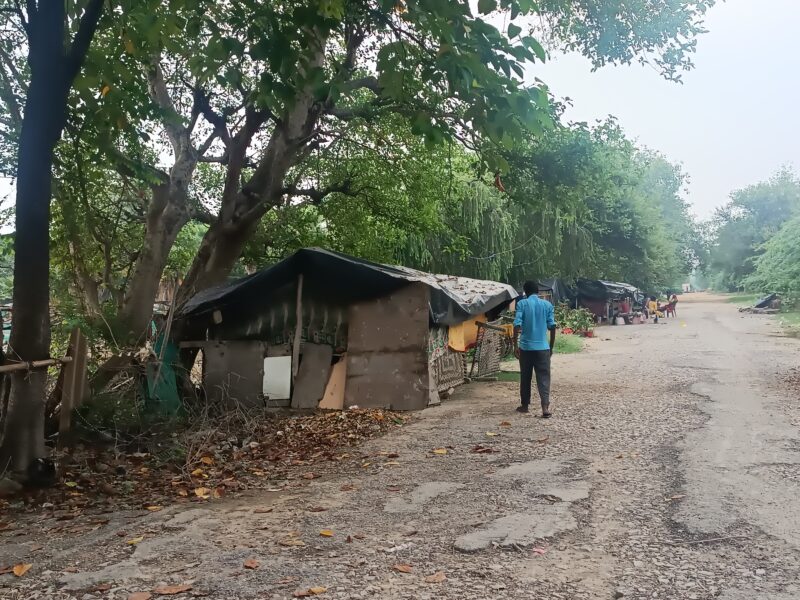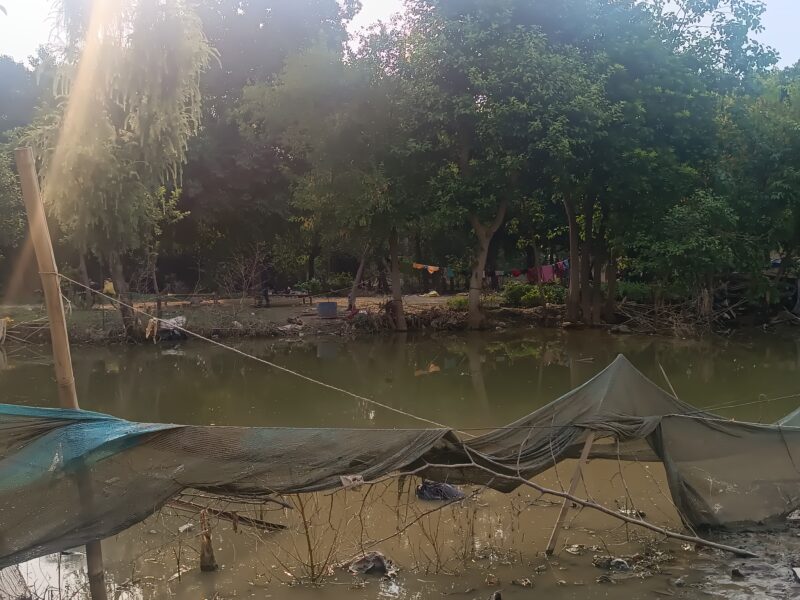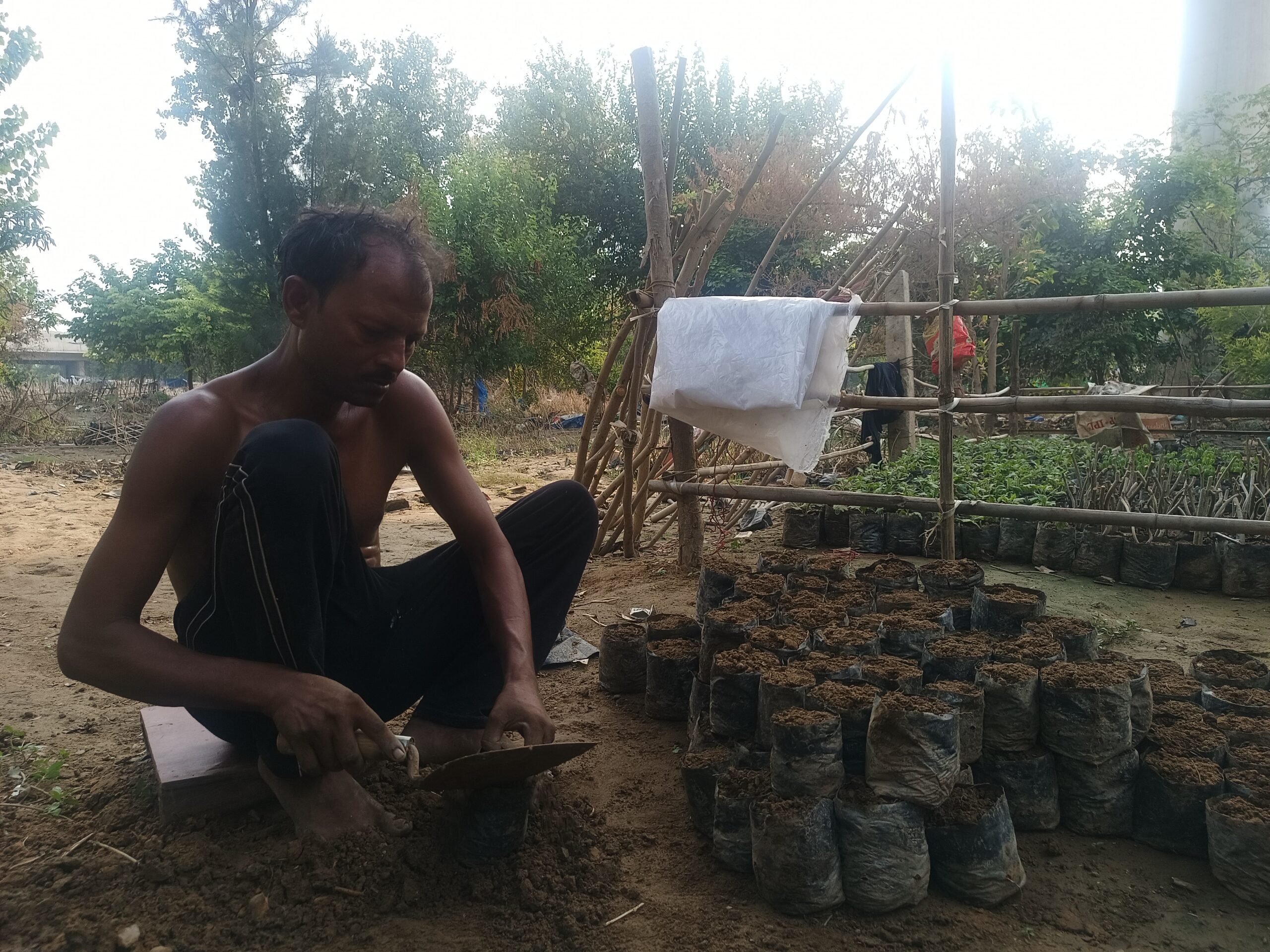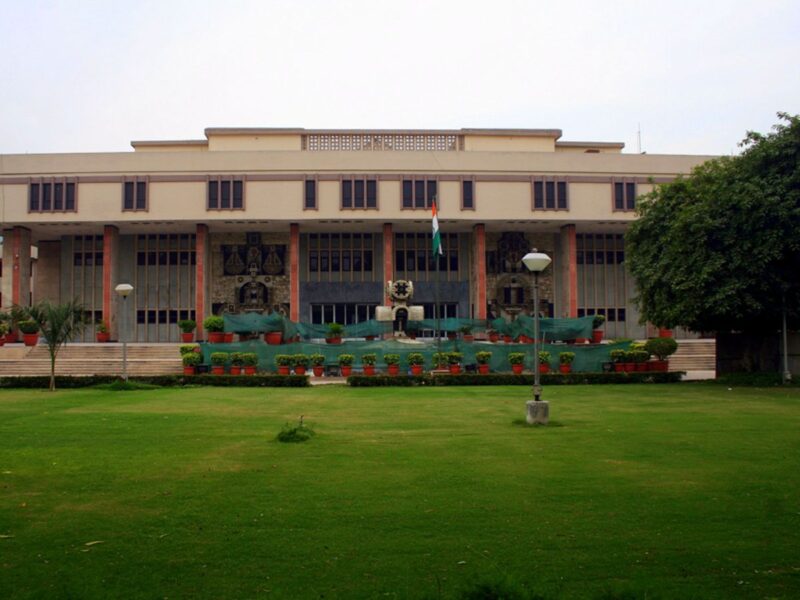“We moved back from there (Mayur Vihar relief camp) three days ago. Everyone from there have returned to places where they were settled before the floods,” says Heeralal, who runs a Nursery in Noida.
Heeralal was living under the Mayur Vihar flyover along with his family since the flooding of Yamuna forced him to seek refuge in makeshift shelters.
Around mid-July, intense rainfall combined with the release of water from Hathnikund Dam compelled thousands of slum dwellers living on the Yamuna floodplain to flee for their lives. A majority of these slum-dwellers are migrants from neighbouring states and were employed in nurseries located on the floodplain near Yamuna Pushta and the Yamuna Bank.
Heeralal, who owns a small nursery, had been living on the Yamuna floodplain with his family for over 12 years.
“When the water started rising, we ran away with our belongings. It was very tough there [in the relief camps]. Yes, we used to get food but it was uncertain.”
When water receded, all of us slowly started returning with whatever belongings we had. Now, we are setting up our jhuggis again.

The raging waters brought not just chaos and displacement, but also an economic suffering that has impacted the lives of residents in low-lying areas.
These individuals, whose nurseries were not just their livelihoods but also their dreams, have suffered staggering losses.
For instance, Heeralal, who once ran a thriving nursery business, now stands amid ruins of his shattered dreams, counting losses of nearly Rs 6 lakh. His story mirrors that of countless others who saw their efforts washed away in the torrential rain and flooding of the Yamuna.
For those who reside deeper within the floodplain, the dry patch near the under-construction bridge close to Yamuna Pushta, serves as temporary refuge. Many are still waiting for the water to recede completely so that they can return to their former homes.
“This is why you are currently seeing numerous makeshift huts near the road,” explains another worker sitting on a cot.
An estimated 4,000 people were shifted to these camps near the Mayur Vihar Phase-1 metro station when the Yamuna water entered their houses in mid-July.
The situation was similar for the floodplain dwellers near Yamuna Bank. Sonu Kumar Yadav, a nursery owner, who has been living on the floodplain for nearly 15 years has shifted his home four times in the last one month.
“When the water started rising, my family and I ran to a higher place on the floodplain. But the water kept rising and hence we kept moving up. Now when it has receded, we all came back,” says Yadav, who is father to 10 children.
The floodplain houses many migrants who work in nurseries or as labour on the government’s afforestation sites. Most of the residents on the floodplain near Yamuna Bank could be seen setting up their home and nurseries, like Yadav.
“Some of them will go closer to the river once the land dries up,” he adds.
Some of these dwellers are still stuck in limbo — their homes are still waterlogged and they have nowhere to go.
“We were asked to leave. Everyone who lived in the relief camp have returned either to the floodplain or their villages. The place where I lived is still water-logged. I am living here and waiting,” says Beena Devi, sitting on a cot near the road at Yamuna bank.
For these dwellers, their misery does not just end with water receding. The flooding destroyed their houses, forcing many to live in cramped tarpaulin shelters amid the monsoon. The flood inundated lakhs of plants lying in these nurseries. Many are waiting to start their lives all over again. The struggles of these dwellers are emblematic of a larger battle against the wrath of nature, where makeshift shelters have become both sanctuaries and symbols of vulnerability.

“We used to keep the plants here. I got plants worth Rs 4 lakh just a few days before the flood. Now nothing is left,” exclaimed Yadav, brooding over his loss due to flood.
When asked where they will go if the water rises again, Yadav questioned back anxiously, “Will it?”





